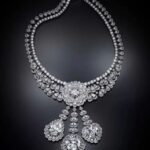Exquisite jewelry is inseparable from dazzling and beautiful gemstones. The connection between precious metals and gemstones, which we refer to as setting in this article, plays a crucial role in the quality of jewelry. Setting is the physical method of securing gemstones to metal.
In Van Cleef & Arpels’ creations, we often see the use of prong settings, bezel settings, pavé settings, and the Mystery Setting technique. Among these, the most distinctive setting method employed by Van Cleef & Arpels is their Mystery Setting.
Van Cleef & Arpels is a relatively new brand among most traditional jewelry houses. Founded in 1896 by Alfred Van Cleef and his uncle Salomon Arpels, the brand has focused on invention and innovation from the very beginning, which has become its hallmark.
Those familiar with this brand will be deeply impressed by its Mystery Setting technique. This setting method is characterized by the absence of any visible metal prongs or bases on the front of the jewelry, hence it’s also called “invisible setting.”

Van Cleef & Arpels’ craftsmen are masters of the invisible setting art, capable of achieving it with various shapes and cuts. The uniqueness of this technique lies in its ability to set small square stones over large areas, creating the illusion of no metal between the stones.
The theory is relatively simple: create a grid with intersecting thin rails no thicker than 0.2mm. Grooves are then cut into the sides of the stone blocks, which slide next to each other, forming the illusion of an invisible setting.
While the theory may seem relatively simple, the actual execution requires a considerable team of artisans working in concert. To achieve the best visual effect, the stones must be evenly matched in color, a task undertaken by gemologists.
Each stone must then be precisely cut to fit perfectly within its allocated space in the jewel – if a stone is off by even 0.1mm, it will not only rattle in its environment but also create visible gaps. The master goldsmith then sets and assembles the piece.
Each piece requires at least 300 hours of work, resulting in only a small number of pieces being produced each year. This technique is more complex and time-consuming compared to prong and bezel settings, and consequently more costly.
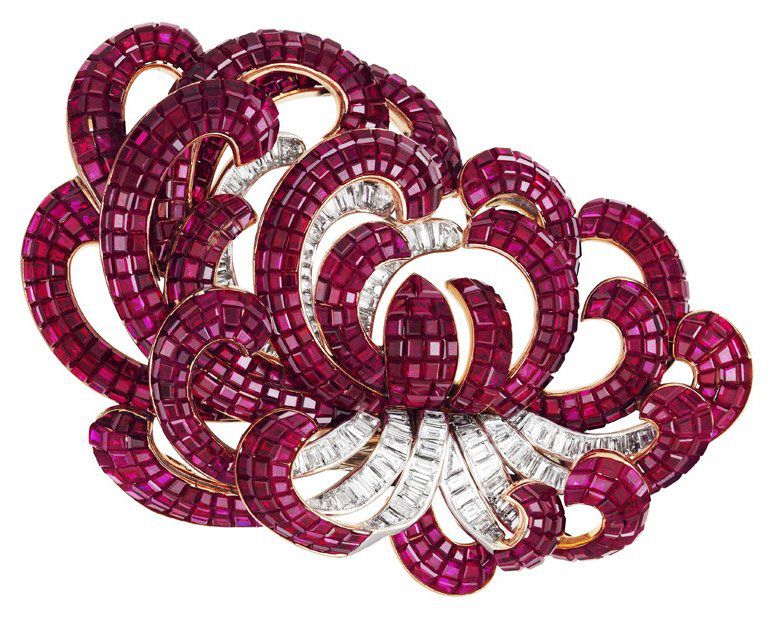
The Mystery Setting was first used in the 1920s, with the patent for the technique filed in 1933. Initially, it was only used on flat objects such as boxes, compacts, and cigarette cases, as the technique was only truly feasible on flat surfaces at first.
However, as Van Cleef & Arpels grew and the technique became more sophisticated, it began to be applied to three-dimensional objects and jewelry. Since the turn of this century, the jeweler has developed the Navette Mystery setting, which uses marquise-cut stones to cover surfaces, and the Vitrail Mystery, which plays with the transparency of stones.
The Mystery Setting technique has become the pinnacle of Van Cleef & Arpels’ craftsmanship.
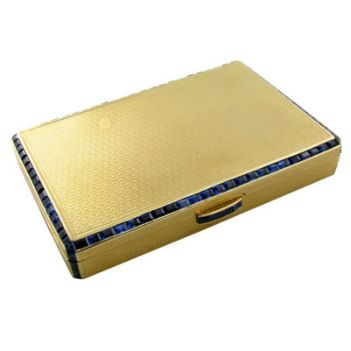


A skilled VC&A craftsman slides specially cut gemstones onto the tracks of this brooch, creating the illusion of an invisible setting. The preferred gemstones for this technique are rubies and sapphires due to their hardness and moderate toughness.
This method of setting gemstones offers a visually refreshing look, and many of Van Cleef’s iconic pieces employ this setting technique.

Let’s now explore the basic steps of the Mystery Setting process:
1.Stone Selection
First, gemstones must be carefully chosen. There are strict requirements for the length-to-width ratio, thickness, and color of the stones. Colors must be consistent or very close (within 0.05mm difference). Significant variations in size or color will affect the final result of the piece.
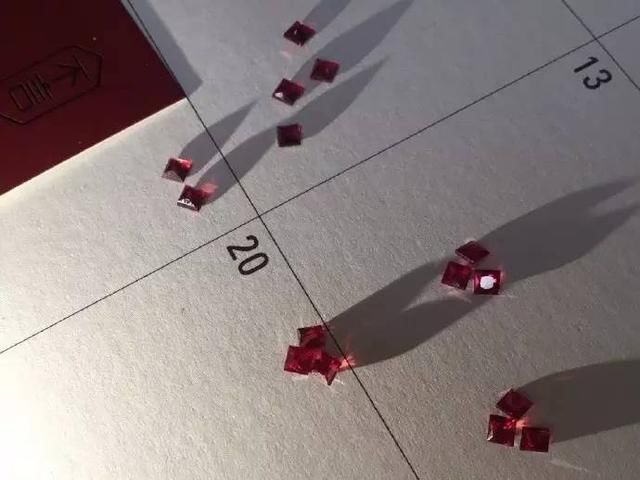
2.Grooving
The Mystery Setting requires grooves to be cut into the lower part of the gemstone’s girdle, a process known in the industry as “grooving.” This process must be carried out with precision and minimal error. The height and depth of the grooves need to be consistent.
The accuracy of the grooves directly affects the aesthetics and quality of the product. Poor grooving can lead to uneven horizontal and vertical lines, tilted or uneven stones, and potential stone loss in the future.
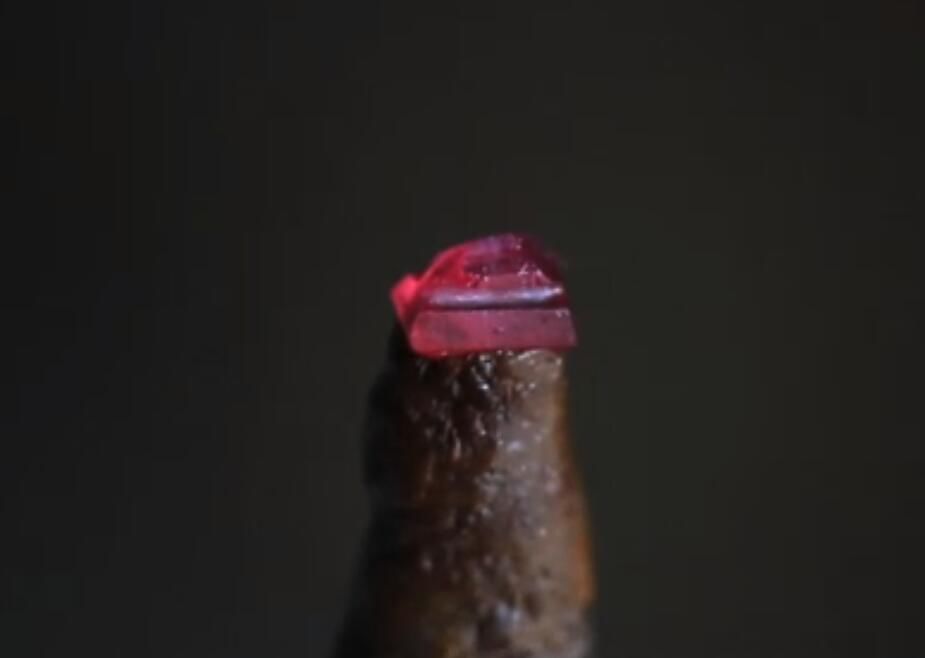
3.Setting Base Carving
The setting base for the Mystery Setting is grid-shaped, with horizontal lines slightly lower than vertical ones. The carving process begins by polishing the vertical lines flat. Then, the distance between two vertical lines is polished to be slightly less than the width of the gemstone.
Finally, a tiny groove is carved on the side of the vertical lines, forming a half “工” shape. This completes the setting base carving.
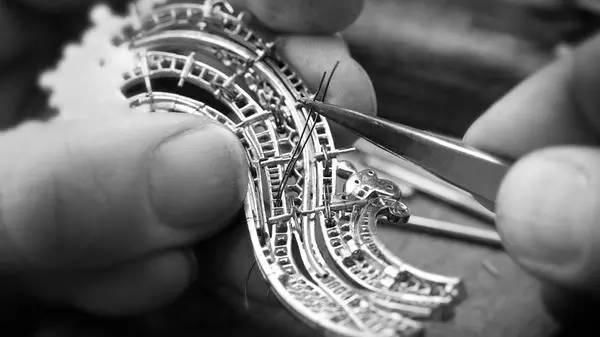
4.Setting
The grooved gemstones are inserted between the vertical lines. The upper part of the groove in the base’s vertical lines interlocks with the groove in the gemstone. Then, using a fine needle and a small hammer, the jeweler gently taps until the gemstone is secure.
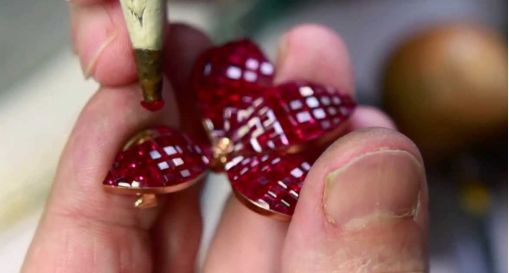
The Mystery Setting process is extremely intricate, with both the setting base and gemstones requiring meticulous craftsmanship. Although this technique was developed long ago, currently only a small number of jewelry setters can execute it well.
A truly exceptional piece of jewelry is inseparable from exquisite setting techniques. The quality of the setting directly influences both the intrinsic and aesthetic value of the jewelry.
Van Cleef & Arpels’ unique “Mystery Setting” technique, with no visible prongs, creates a clean and pleasing setting effect that allows the gemstones to be better displayed. This popular technique has become a distinctive signature of the brand.
Van Cleef & Arpels’ Mystery Setting: The Invisible Luxury That Justifies Its Price
Tweet
